Psoriatic arthritis is an inflammatory disease that affects the joints and occurs against the background of a specific pathology - psoriasis. It is most often encountered by people between the ages of 30 and 50. In some situations, psoriatic arthritis develops as an independent disease.
Comprehensive diagnostics, radiological signs and a rheumatologist, dermatologist will help to establish the cause of the pathology. Correctly selected therapy is the prevention of complications.
Record content:
- 1 Views
- 2 Stages and degrees
- 3 Symptoms
- 4 Causes
- 5 Diagnostics
- 6 When to see a doctor
- 7 Prevention
-
8 Treatment methods
- 8.1 Medications
- 8.2 Traditional methods
- 8.3 Other methods
- 9 Possible complications
- 10 Disease video
Views
The classification of psoriatic arthritis depends on numerous factors, including the severity of pathological changes, the area of localization, the number of affected joints.
| Name | Description |
| Asymmetric | A common form of the disease in which asymmetrically located joints on the legs or arms are affected. |
| Symmetric | The inflammatory process affects the interphalangeal and metacarpophalangeal small joints. |
| Distal interphalangeal arthritis | The focus of the inflammatory process is located directly in the distal interphalangeal joints. |
| Mutating form | Destructive and degenerative changes occur as a result of osteolysis. There is a complete resorption of bone tissue without the formation of fibrous foci. The pathological condition provokes subluxation, irreversible deformation of the joints, shortening of the toes and hands. The patient is worried about severe skin symptoms. The mutating form of psoriatic arthritis is accompanied by spondyloarthritis. |
| Psoriatic spondylitis | Psoriatic disease, which provokes an inflammatory process that affects various parts of the spine. Pathology often leads to damage to the joints of the lower and upper extremities. |
| Malignant psoriatic arthritis | The prolonged course of the inflammatory process leads to the degeneration of the affected tissues. |
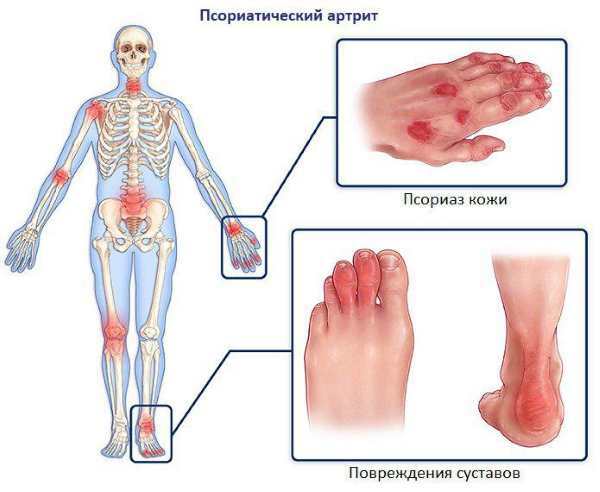
In the early stages of inflammatory and degenerative processes, symptoms in most cases are absent. As they progress, the clinical picture intensifies.
Stages and degrees
Psoriatic arthritis (X-ray signs will help determine the area of localization of pathology) develops in stages depending on from the progression of degenerative-dystrophic processes:
- At the first stage, the patient's performance is fully preserved.
- At the next stage, the patient's working capacity deteriorates.
- At stage 3 of the disease, mobility is so impaired that it is difficult for the patient to self-serve.

- The last stage in the development of psoriatic arthritis is characterized by a complete loss of mobility. At this stage, the affected tissues gradually die off.
A rheumatologist or dermatologist will help to establish an accurate diagnosis and choose a treatment.
Symptoms
The clinical picture of psoriatic arthritis depends on the form of the disease that was diagnosed in a person. Symptoms will allow the doctor to determine the area of localization of pathological processes and pre-establish a diagnosis.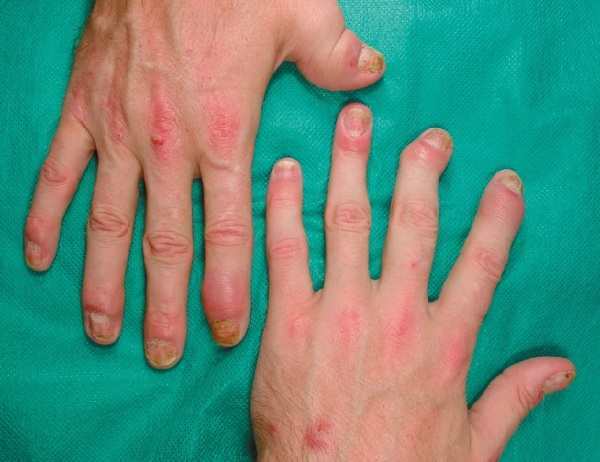
| Name | Symptoms |
| Asymmetric psoriatic arthritis |
|
| Distal interphalangeal arthritis |
|
| Symmetric |
|
| Mutating form |
|
| Psoriatic spondylitis |
|
| Malignant psoriatic arthritis |
|
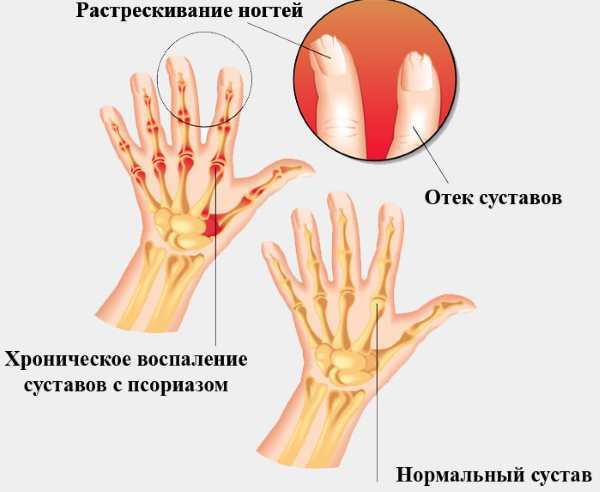
The malignant form of the disease, as the degenerative-dystrophic processes progresses, gradually affects the internal organs and eyes. The severity of clinical signs throughout the day with certain forms of the disease may decrease due to the production of certain hormonal substances by the endocrine system.
Causes
Psoriatic arthritis (radiological signs will show where the pathological changes are located) has not been fully studied by doctors.
The studies carried out allowed specialists to determine only the provoking factors:
| Name | Description |
| Genetic inheritance | If the family has relatives with psoriatic arthritis, the chances are high that the child will have the disease. |
| Immune disorders | The immune system of the human body produces antibodies that attack its own cells (synovium, bone and cartilage tissue). |
| Emotional outbursts | Long-term stresses, psychoemotional instability, depressive states, nervous overstrain can provoke pathological processes. |
| Hormonal imbalance | The period of bearing the baby, menopause. |
| Injury, damage | Surgery, physical impact, tissue scarring. |
| Taking medications | Long-term treatment with non-steroidal anti-inflammatory drugs, antihypertensive drugs. |
| Bad habits | Alcohol or drug addiction. |
| Overweight | Obesity of varying degrees, weight gain. |
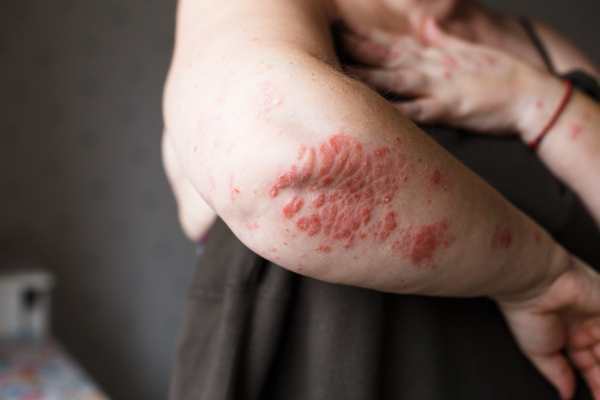
An unfavorable environment, a sharp change in weather conditions, increased physical activity or even hypothermia of the body also act as a provoking factor.
The same applies to radioactive exposure, intoxication of the body with chemicals, acute viral or bacterial diseases, endocrine system damage (diabetes mellitus, hypothyroidism).
Diagnostics
A comprehensive examination for psoriatic arthritis will help determine the cause of the pathological condition and differentiate the disease. Patients may also need advice from other specialized specialists (gynecologist, endocrinologist, immunologist, phthisiatrician, surgeon, ophthalmologist and cardiologist).
The main diagnostic method is X-ray and examination by a doctor, who determines the disease by concomitant clinical signs. If necessary, in order to confirm the preliminary diagnosis, the specialist prescribes an examination:
| Name | Description |
| General and biochemical blood test | Blood counts change. The erythrocyte sedimentation rate (ESR) and the level of leukocytes increase, hypochromic anemia develops. |
| Immunological studies | In the patient's blood, specific markers are detected, indicating the development of psoriatic arthritis. |
| Computed tomography (CT) | A diagnostic method that allows you to view the joints in the pelvic area, the spine. |
| Puncture | The synovial fluid is examined. |
| X-ray | At an early stage in the development of psoriatic arthritis, the joint space narrows. The late stages of the disease are accompanied by degenerative and destructive changes that can be seen in the photographs |
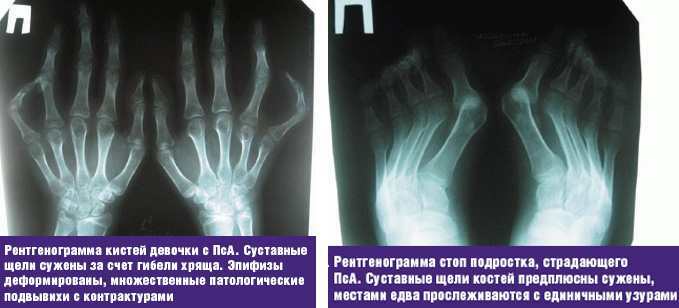
The results of the research are necessary for the doctor in order to correctly draw up a treatment regimen and select the most effective medicines for the patient.
When to see a doctor
A rheumatologist or dermatologist should be visited when the first signs of psoriatic arthritis appear. Consultation with a specialist, additional examination and correctly selected therapy will help to exclude the occurrence of complications.
Treatment of psoriatic arthritis is aimed at reducing the clinical signs of the disease, as well as preventing the spread of the inflammatory process to healthy areas of the body. Pathology negatively affects the condition of bones and joints. Without timely medical care, they will atrophy, which will lead to disability.
Prevention
Doctors cannot say what is the main cause of psoriasis in humans. Therefore, it is impossible to prevent the disease in most cases.
Prevention for psoriatic arthritis helps to reduce the likelihood of complications and improve the patient's quality of life:
- It is recommended to completely abandon bad habits (abuse of alcoholic beverages, tobacco products and drugs).
- It is necessary to lead a mobile and active lifestyle, play sports, temper the body.
- It is important to eat right, keep track of the kilograms, and prevent the accumulation of excess weight. Fill the menu with fortified foods.
- Exercise regularly.
It is also necessary to adhere to all the prescriptions of the attending physician, to take medications strictly according to his recommendation. Exclude self-treatment and the use of aids to avoid complications. Visit a specialist for preventive purposes.
Treatment methods
Psoriatic arthritis (radiological signs will help determine the stage of the disease) is treated with complex methods. The therapy regimen is drawn up by a rheumatologist or dermatologist after a complete examination, based on the results obtained.
Patients are prescribed medications, it is recommended to attend physiotherapy procedures and adhere to proper nutrition. If there are no medical contraindications, alternative methods can be used, only after consulting your doctor.
Medications
Psoriatic arthritis, given the radiological signs, is treated in most cases on an outpatient basis. In severe and emergency situations, the patient is hospitalized in an inpatient department of a medical institution.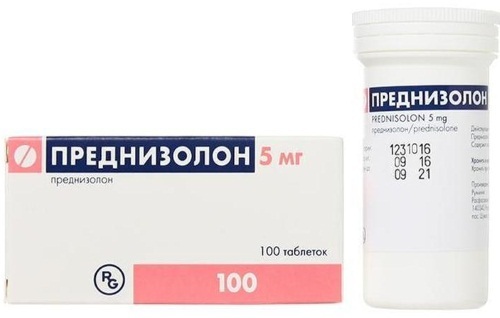
| Drug group | Name | Application |
| Glucocorticosteroids | Prednisolone, Methylprednisolone | Medicines reduce the inflammatory process, pain syndrome, restore the functional activity of the patient's body. Patients are prescribed 20-30 mg per day. |
| Non-steroidal anti-inflammatory drugs | Meloxicam, Diclofenac | The drugs reduce painful sensations and soft tissue swelling. Patients are prescribed 7.5-15 mg once a day. |
| Immunosuppressants | Methotrexate, Cyclosporine | Medicines block autoimmune processes. Patients are prescribed orally from 10 to 25 mg per week. The dosage is gradually increased. |
| Genetically engineered biological products | Infliximab, Etanercept, | The medicine is administered intravenously through a dropper. Adults are prescribed 5 mg / kg every 2-8 weeks. |
| Immunosuppressants | Azathioprine, Cyclosporine | The medicine is recommended to be taken orally at 1-2.5 mg / kg per day. The calculated dosage of the drug should be divided into 2-3 doses. |
| Chondroprotectors | Teraflex, Movex | Medicines help repair damaged tissue. The tablets are recommended to be taken after meals with plenty of water. Adult patients are prescribed 2 capsules 3 times a day. The duration of therapy is 3 weeks. |
| Psycholeptics | Persen, Afobazol | Medicines are prescribed to patients with neurotic disorders. The recommended dosage is 2 capsules 2 times a day. The course of treatment lasts 14 days. |
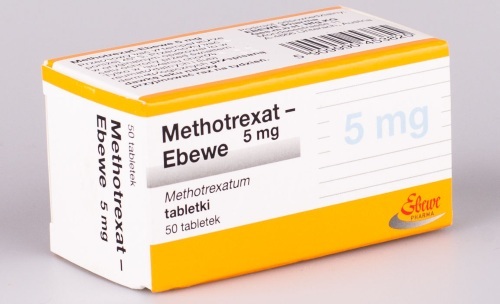
Additionally, patients with psoriatic arthritis are prescribed topical medications (ointments, gels, creams), as well as vitamin complexes to maintain immunity. In difficult situations, patients are shown the plasmapheresis procedure to purify the blood.
Traditional methods
Non-traditional remedies will help with psoriatic arthritis, if the treatment is carried out in a comprehensive manner and after consulting a doctor. The herbs used can provoke allergic reactions or individual sensitivities.
Effective folk remedies:
| Name | Recipe | Application |
| Healing ointment | Grind hop cones, sweet clover flowers and St. John's wort. Mix the resulting mass in equal proportions with eucalyptus oil and petroleum jelly. | It is recommended to apply the finished ointment to the affected areas of the body, it is easy to rub in with massage movements. |
| Chamomile, rosehip or elecampane | Grind any dry herb (1 tsp) and pour hot water (1 tbsp). Leave for 40-60 minutes and strain. | The resulting broth is recommended to be consumed orally, 100 ml 3 times a day. |
| Pine nuts | Pour 300 g of the main product with vodka (500 ml). Insist 3 weeks in a cool dark place. Shake occasionally. | The strained tincture should be taken orally 5 ml 3 times a day before meals. The course of treatment lasts 2 weeks. |

Additionally, patients with psoriatic arthritis are also advised to use herbal teas instead of tea. You can brew St. John's wort, birch leaves, dandelion, juniper or blackberry.
Other methods
Psoriatic arthritis (X-ray signs will show the degree of development of degenerative-dystrophic processes) in complex therapy requires a radical change in lifestyle from the patient:
- Regularly engage in therapeutic exercises, swim, walk. When performing physical education, monitor the condition of the joints. If pain occurs, rest. You cannot overload them.
- Wear comfortable and comfortable shoes. Do not allow negative effects on the joints. Otherwise, they will deform even more.
- It is recommended to get enough rest. Before going to bed, walk in the fresh air, ventilate the living space.
- Refuse to drink strong coffee and tea before a night's rest. The same goes for watching emotional movies.
- It is important to strictly control your posture. Curvature of the spine will additionally negatively affect the health status of psoriatic arthritis.
- It is recommended to sleep in a comfortable position, use an additional anatomical mattress and pillow.
- Observe skin hygiene, refuse to use cosmetics, which contain preservatives, dyes, fragrances. Doctors recommend giving preference to the children's series of bathing accessories. They moisturize the skin well, preventing irritation.
- To refuse from bad habits. Alcohol and nicotine negatively affect the functioning of blood vessels, impairing the blood circulation process.
Patients with psoriatic arthritis are also advised to avoid stress and emotional outbursts. It is necessary to adhere to a calm and measured life.
The dietitian doctor will help to make the menu, taking into account the patient's condition and the recommendations of the attending physician.
| Allowed Products | Prohibited foods |
|
|
Small quantities of fish products are allowed. A correctly composed menu will help to influence the development of psoriatic arthritis and suspend pathological processes.
Complex therapy of the inflammatory process also involves patients visiting physiotherapy procedures:
- magnetotherapy;
- laser treatment;
- UHF therapy;
- electrophoresis, phonophoresis with drugs (chondroprotectors, hormonal agents).
Additionally, it is also recommended to perform physiotherapy exercises every day. A physiotherapist will help you choose a set of exercises, taking into account the patient's condition and the recommendations of the attending specialist. Physiotherapy exercises will help improve motor functions.
Possible complications
The lack of correctly selected and timely therapy for psoriatic arthritis will lead to serious consequences: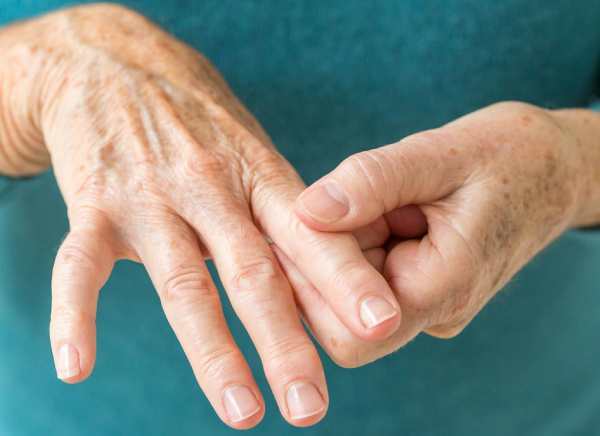
| Name | Description |
| Disability | Pathological processes affect large joints, disrupting their functioning and reducing mobility. A person becomes disabled, a bedridden life through time will lead to negative consequences. |
| Rebirth of tissues | Malignant processes, spreading throughout the body, provoke hectic fever, in which the body temperature changes sharply, sweating increases. Then bedsores and trophic ulcers appear, hair falls out, lymph nodes increase. |
| The spread of the inflammatory process | Pathological changes affect the internal organs. Hepatitis, myocarditis, glomerulonephritis and other dangerous pathologies develop. |
Advanced forms of psoriatic arthritis disrupt the functioning of the central nervous system. As a result, a person develops epileptic seizures, neuritis or encephalopathy.
Psoriatic arthritis in most cases allows people to live comfortably if all the recommendations of the attending physician are followed. Fatal outcome is more often a consequence of complications of pathological processes. To control the disease, it is necessary to periodically undergo an examination to monitor radiological signs.
Disease video
Psoriatic arthritis. Lecture:



